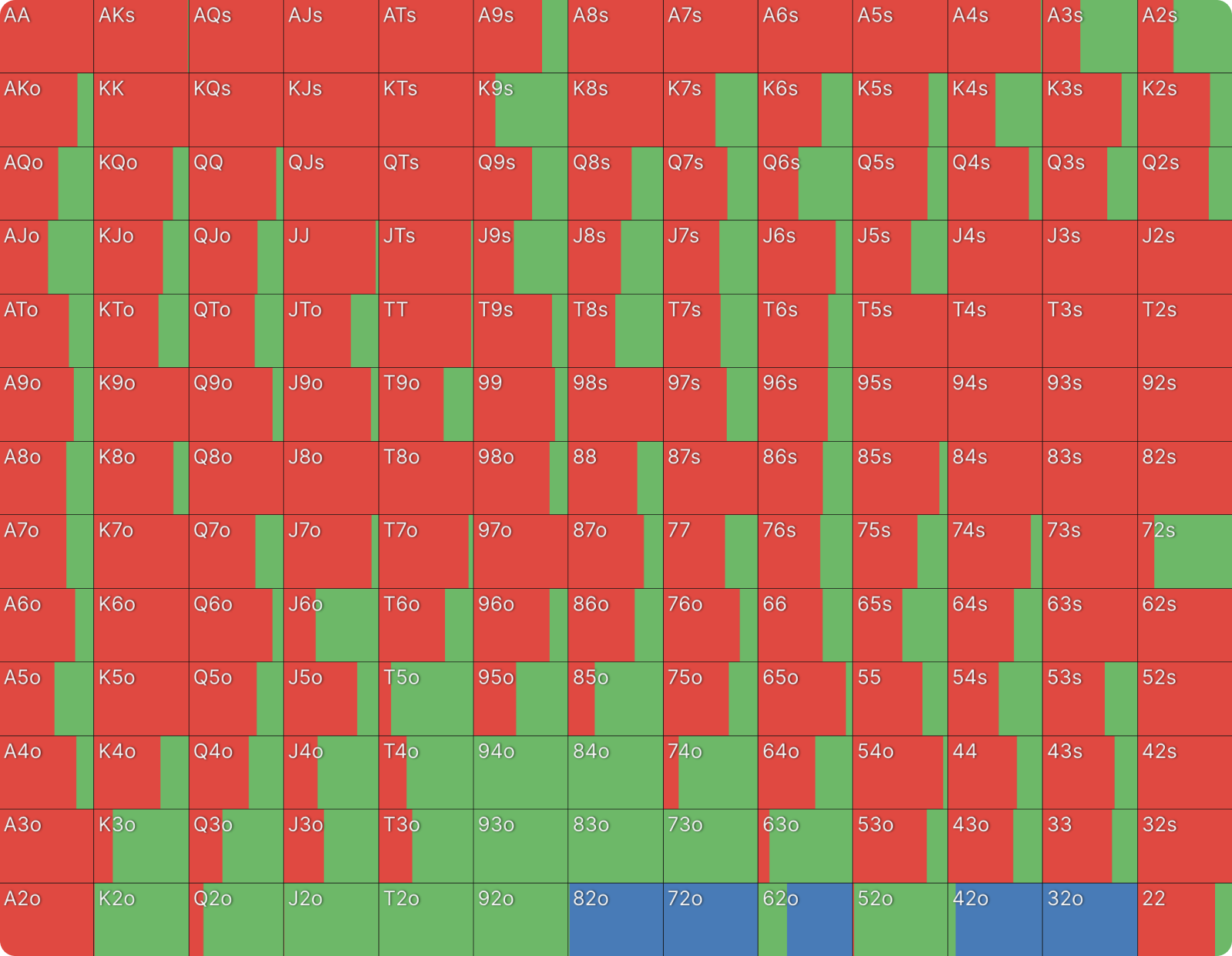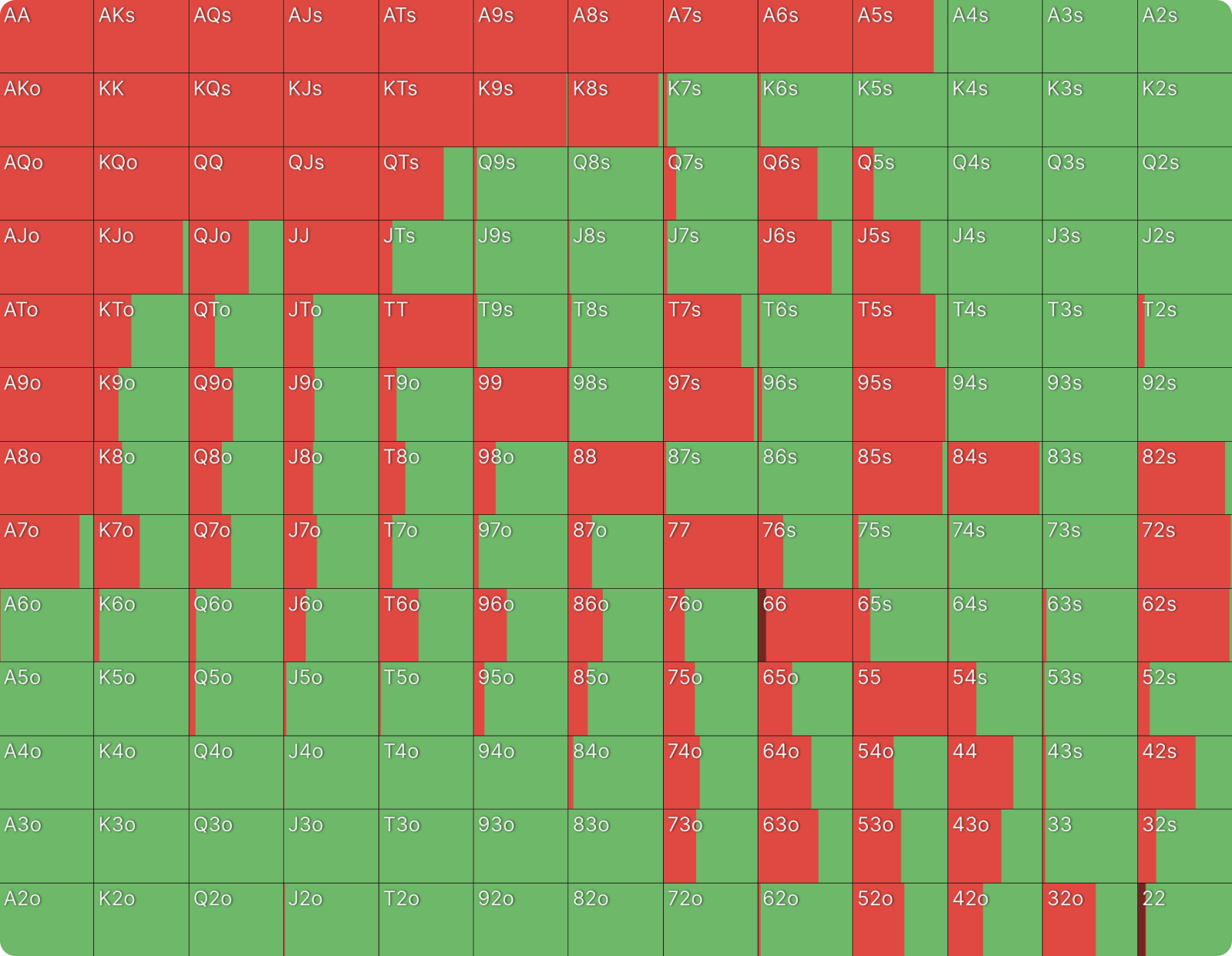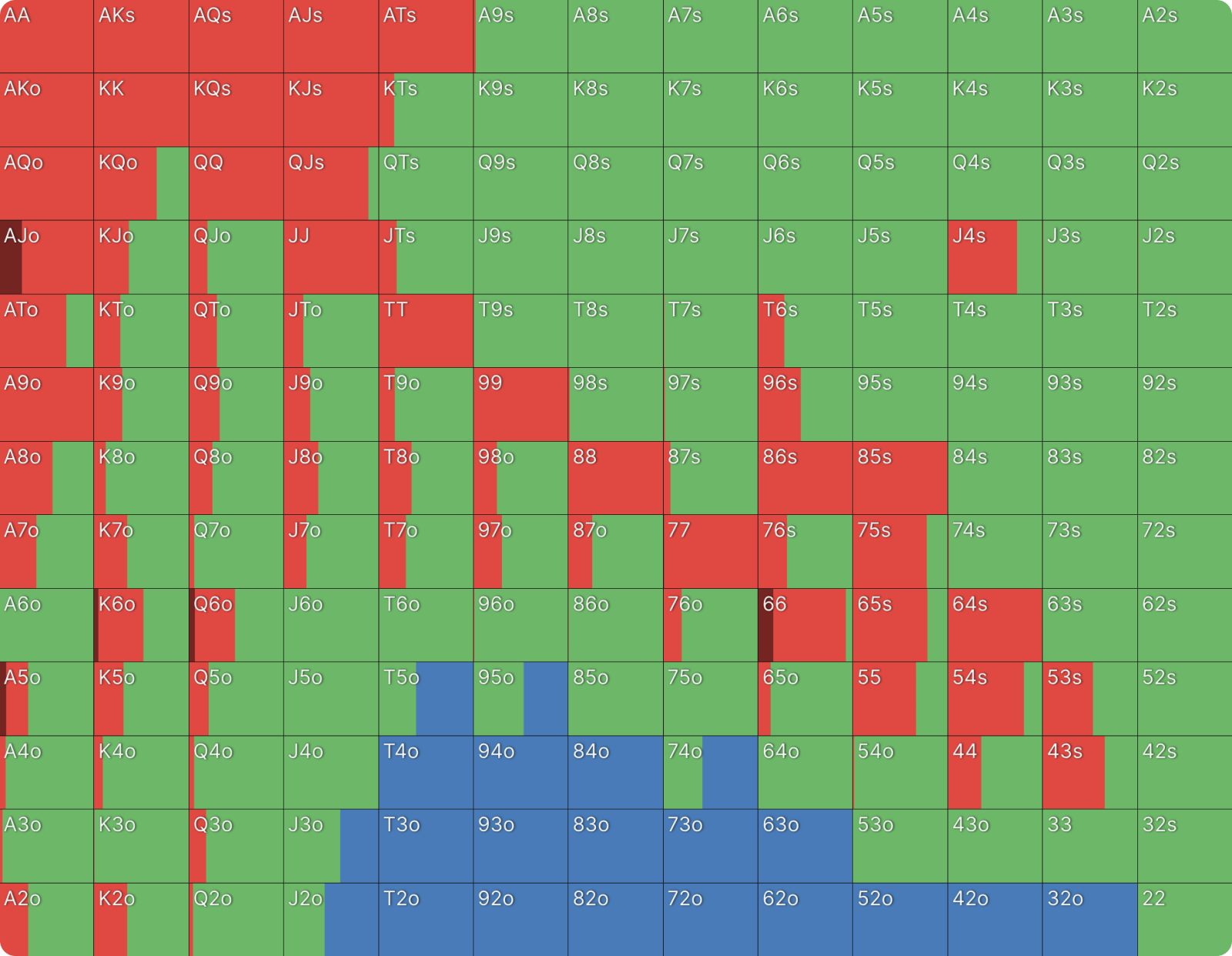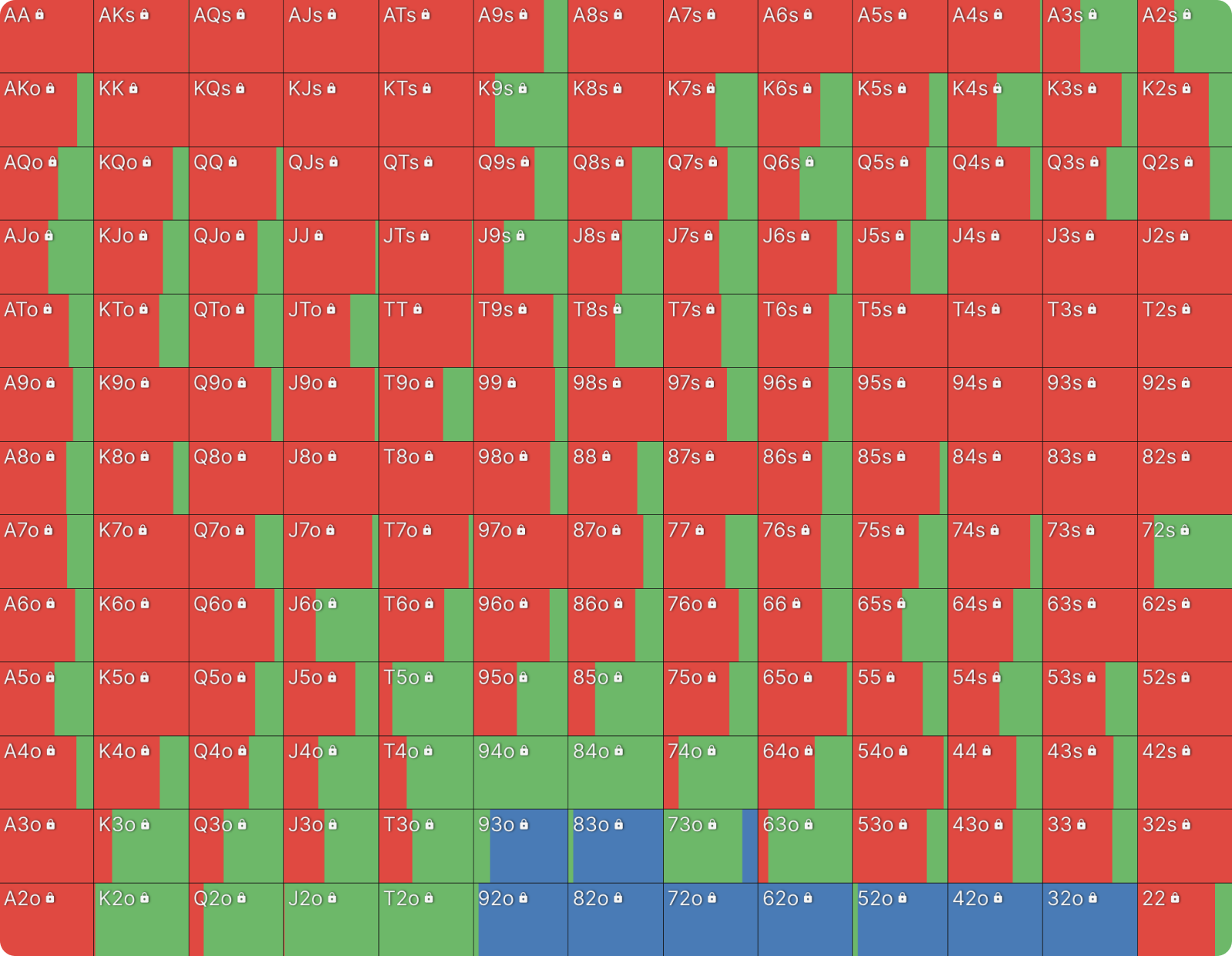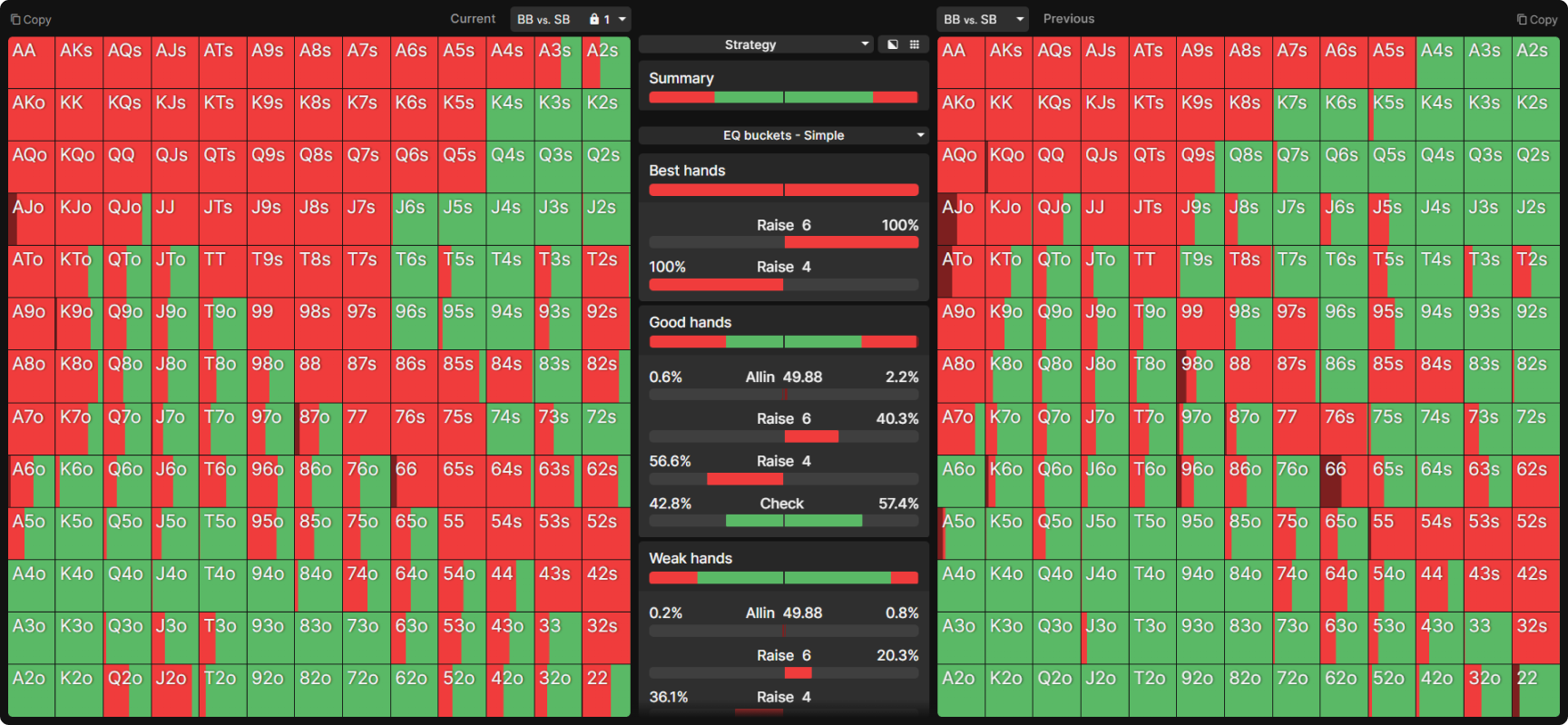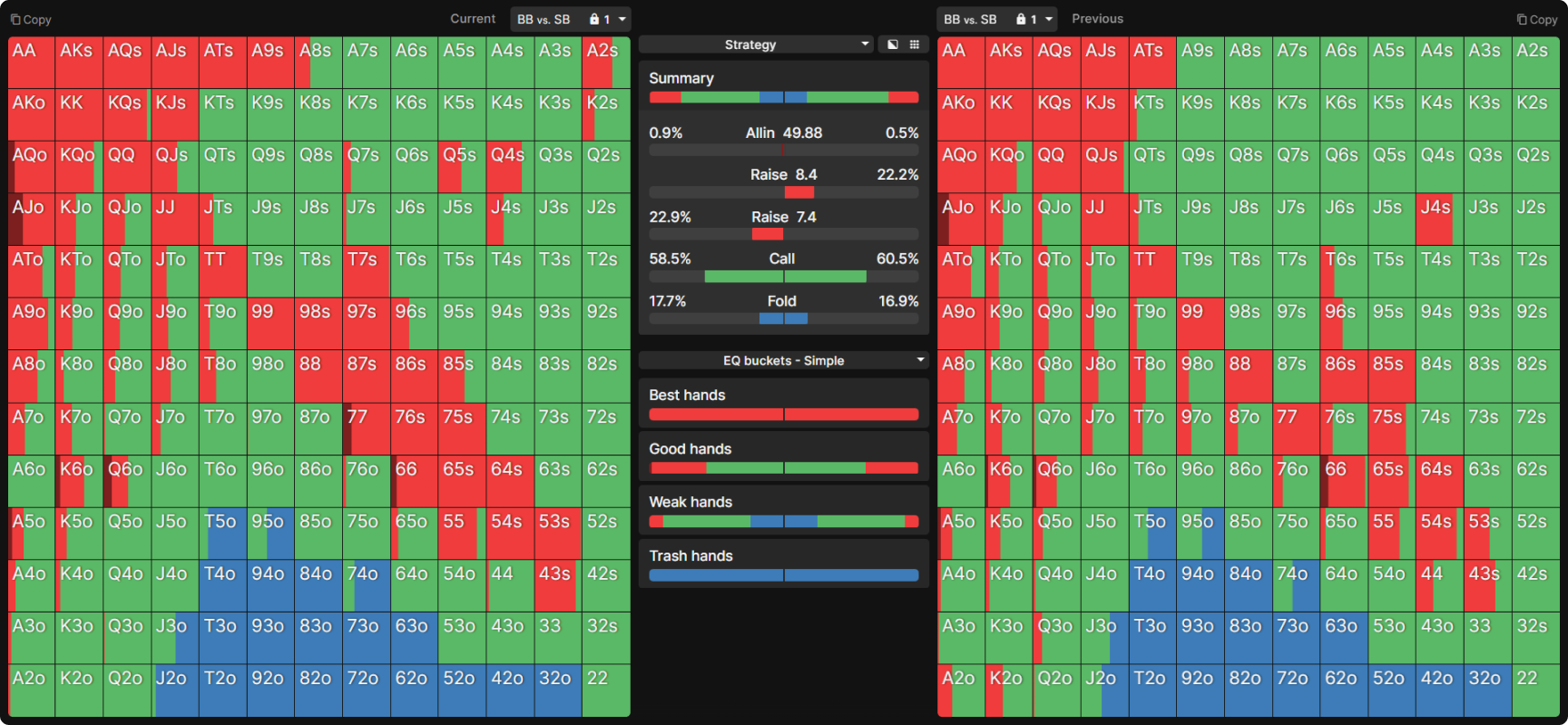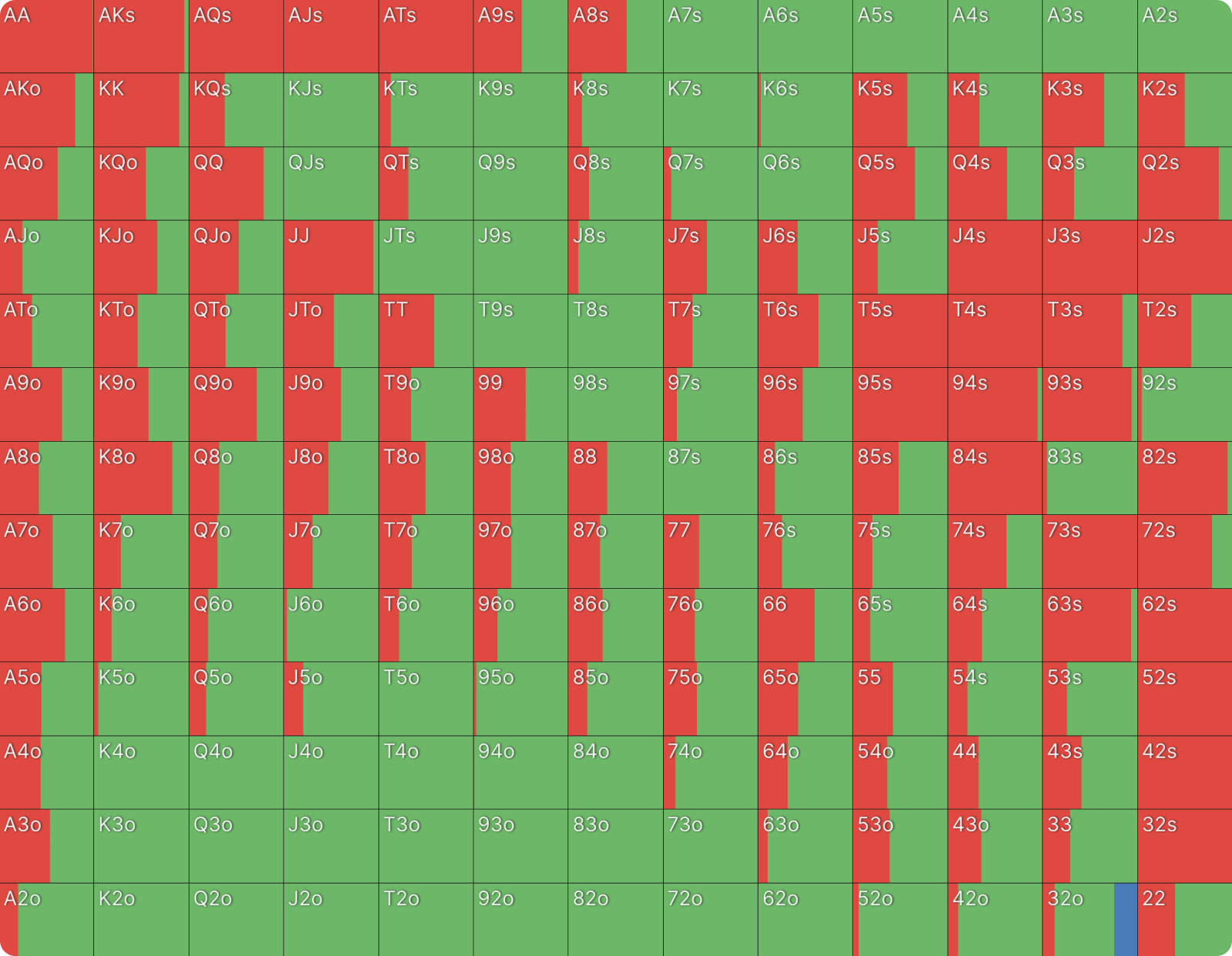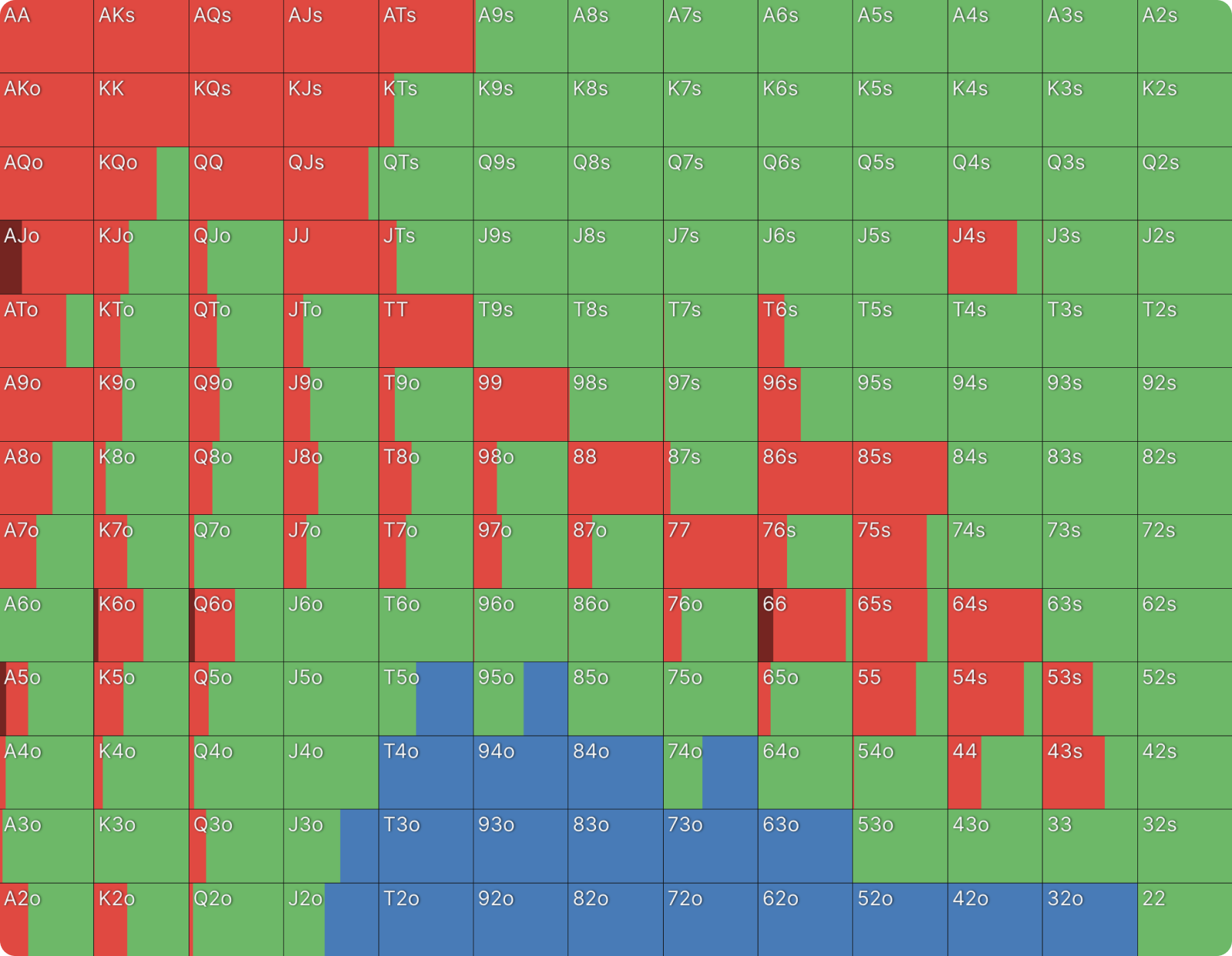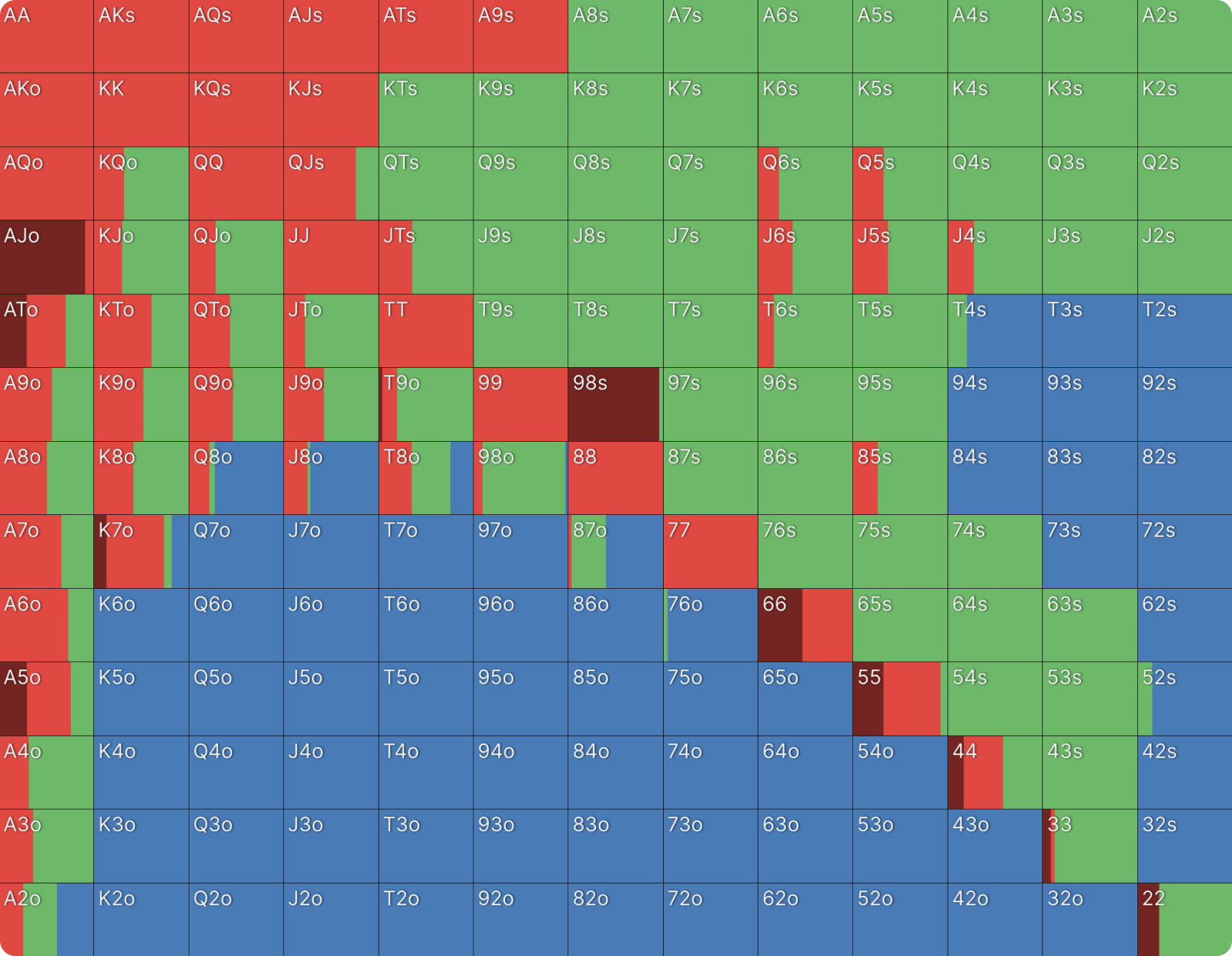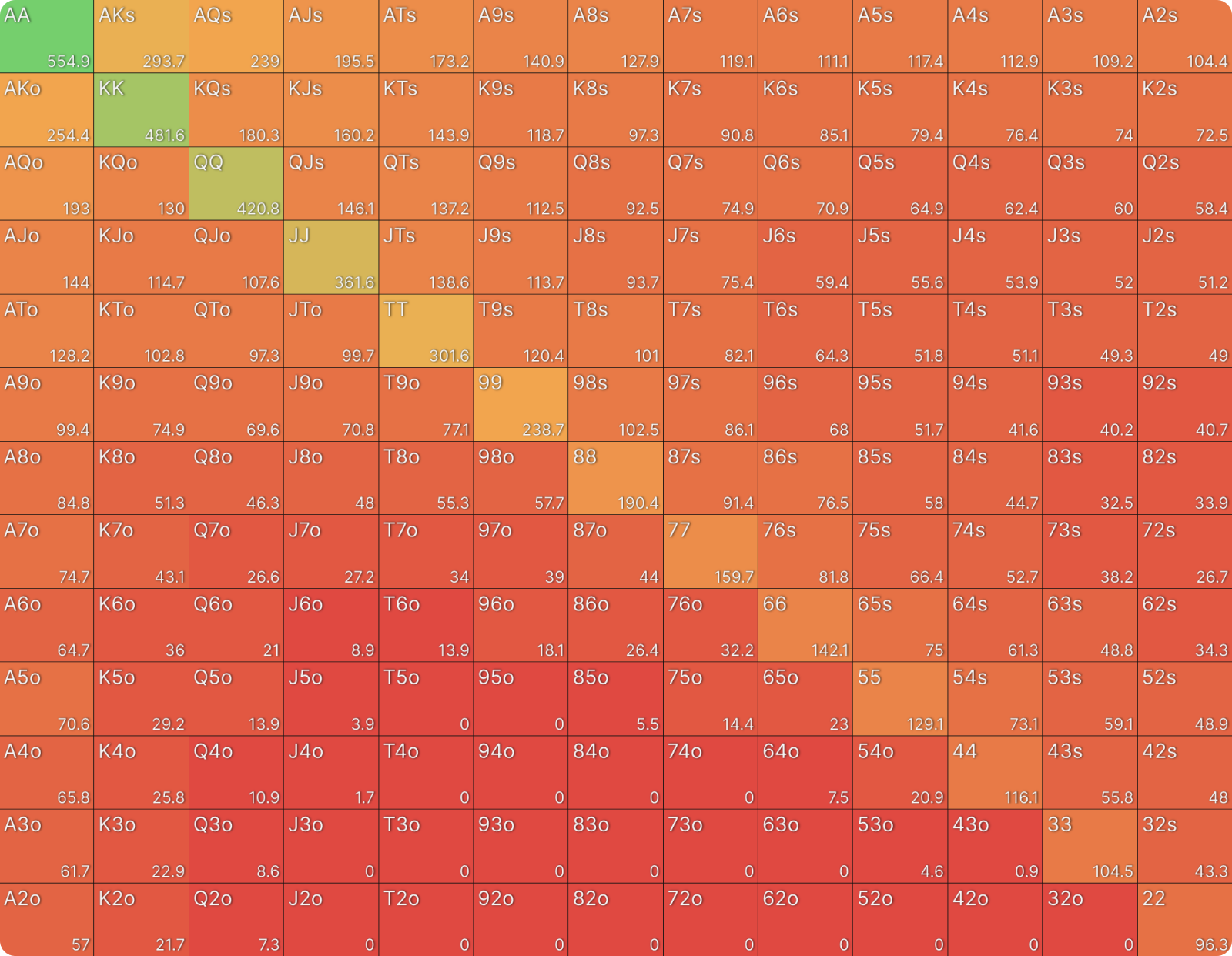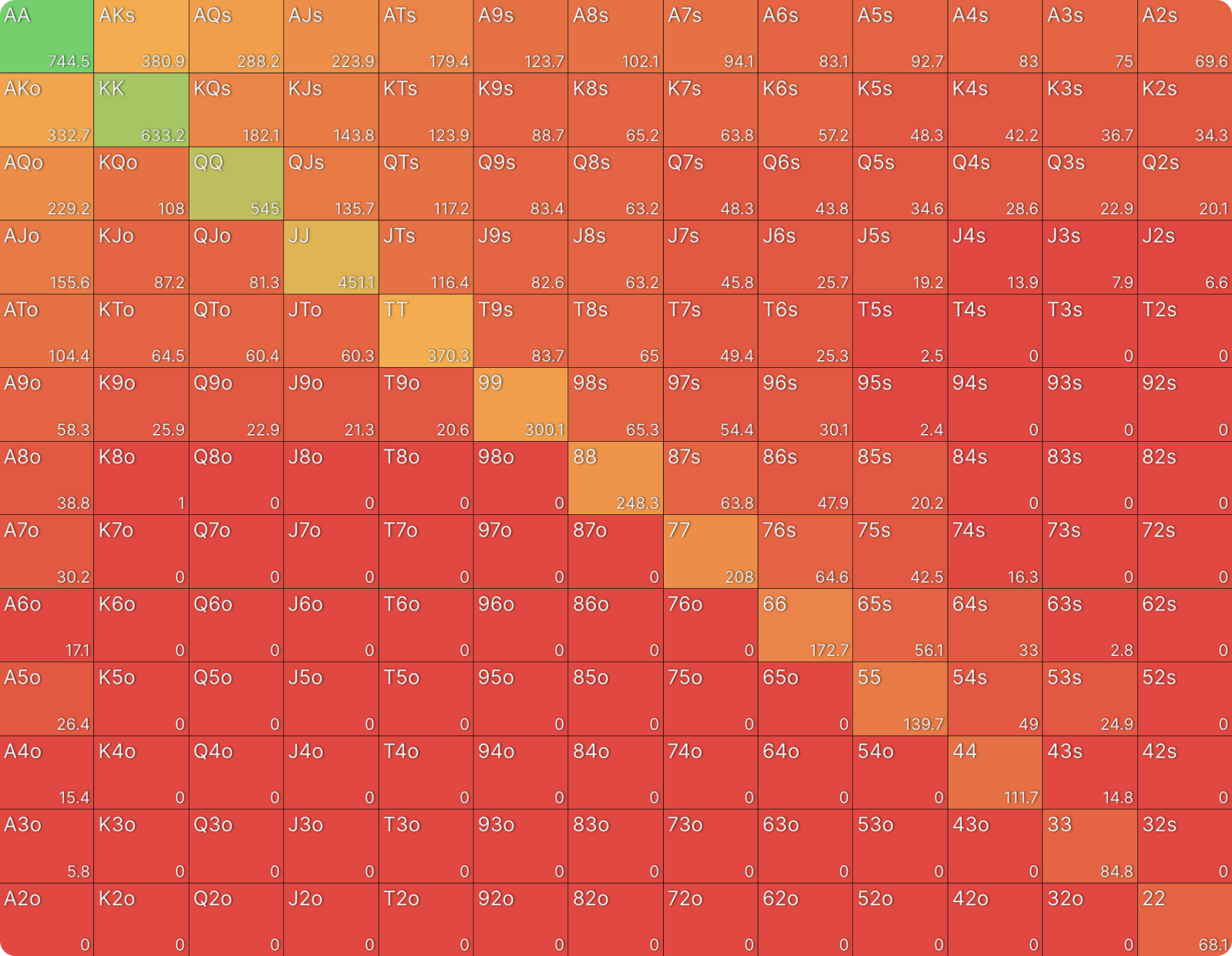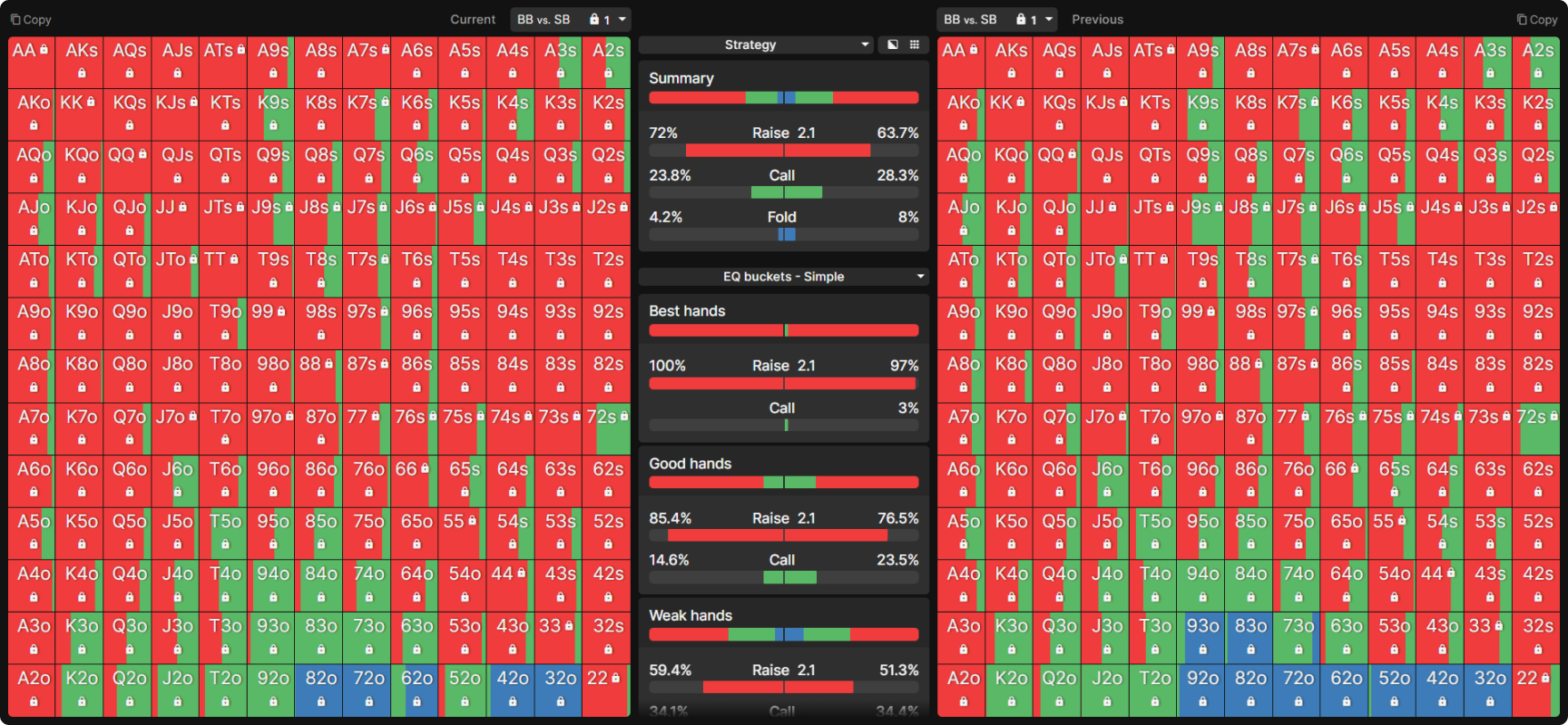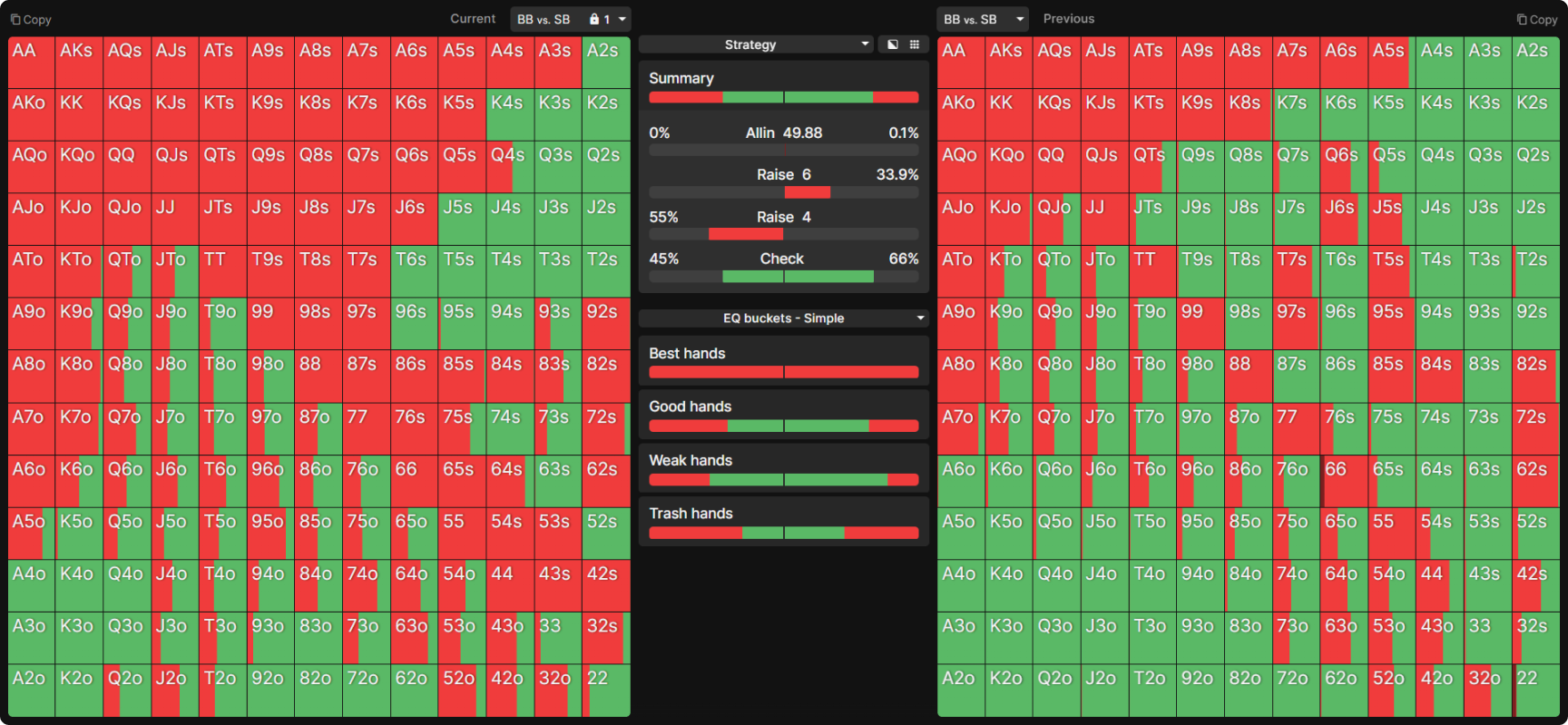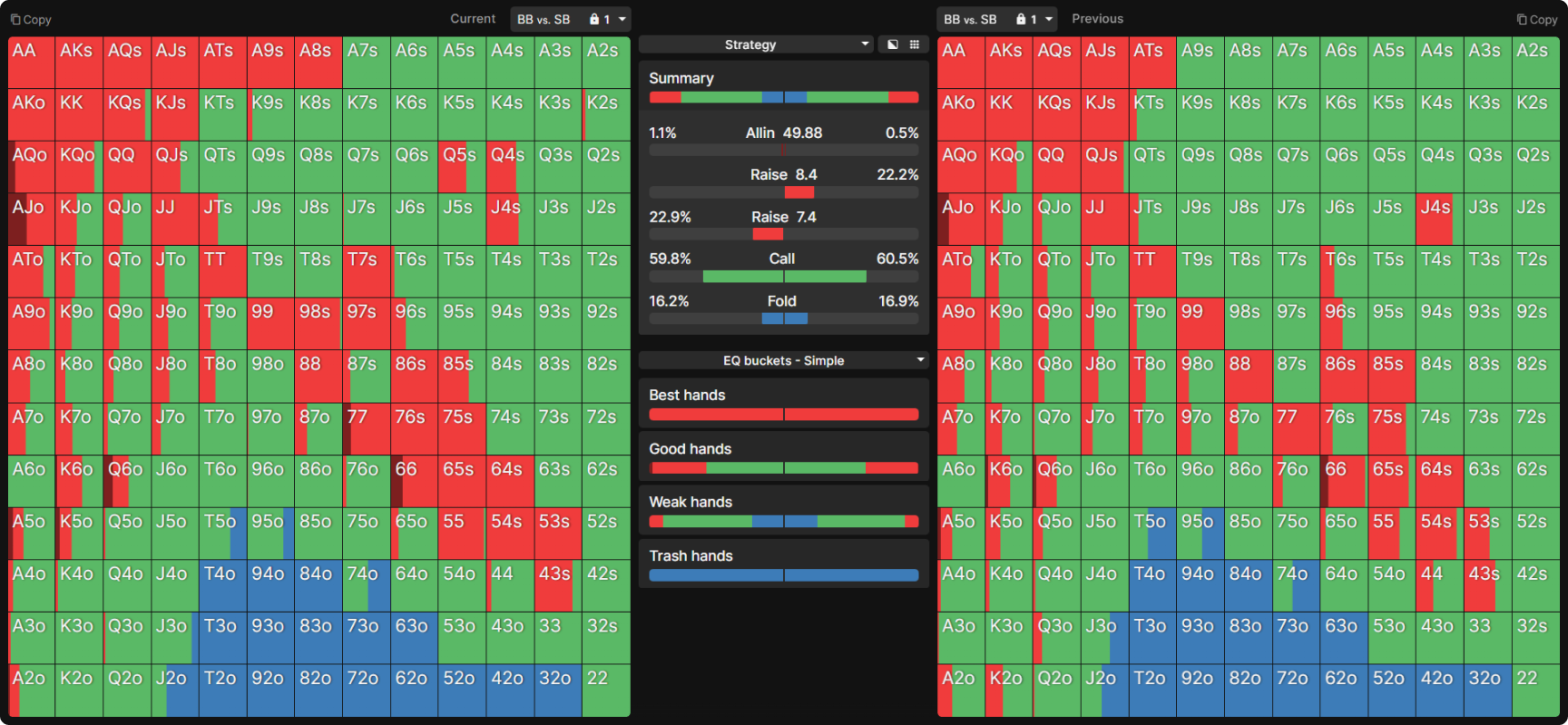Heads up! Exploiting SB’s Preflop Mistakes
Heads up (HU) tournament play presents unique challenges to the average player. Many tournament players, particularly those that play large field MTTs, only rarely experience heads up play. This article will examine three common examples of how our opponents, in the Small Blind, may vary their preflop HU strategies in-game and how we, as the Big Blind, can take advantage of these variations.
Over-folding Small Blinds
Some players don’t play the bottom of the range they’re supposed to play when heads up. Using the AI Heads Up preflop solver, we can simulate this deviation and develop a counterstrategy for the Big Blind. Before we look at this specific example, let’s set the standard of SB’s optimal opening range when playing 50bb effective. Note that the ranges used in this article are based on a Chip EV game with a 0.12bb ante.
Because of the relatively high Stack-to-Pot RatioStack-to-pot ratio (SPR)
The effective stack divided by the size of the pot. SPR is commonly used to gauge the value of implied odds and the relative value of made hands. (SPR), we can see most hands open-raising at a high frequency with some limping included to balance the bottom of SB’s range. Overall, the SB only folds 4% of hands. Given this wide opening range, how does the BB respond?
The BB attacks the SB’s relatively weak limping range by raising 34% of their range, mainly balancing the bottom of their suited hands and low offsuit connectors with the strongest hands to maintain a balanced range postflop. Against a 2.1bb open, the BB will 3-bet a stronger range, mixing in weaker offsuit face card hands that block part of the SB’s 3-bet calling range.
With this baseline in mind, what should the BB do if the SB deviates from this strategy? Let’s examine three potential SB deviations and BB exploits. As an example, let’s use nodelocking to double SB’s fold frequency from 4 to 8% and see how this affects BB’s strategy.
One big adjustment is that BB uses a smaller raise size, 4bb instead of 6bb, because of the SB’s stronger limping range. However, we also see a big increase in the raising range from 34% to 48% of hands due to the smaller raise size. When we commit fewer chips with our raise, we can use a wider range as there’s less risk in raise-folding.
We can also see that BB’s response to raises has changed by 3-betting 0.7% more often to 7.4bb, rather than 8.4bb, while calling 2% less. This matches our adapted response to a limp strategy of using a smaller raise sizing more frequently.
When our opponent over-folds their small blind deep stacked, we begin raising and 3-betting to a smaller size more frequently.
Small Blinds Who Raise Large
In the previous examples, we saw the SB using a 2.5bb open size, but sometimes a player may prefer a larger open size. This could be due to a perceived skill disadvantage where they want to increase variance or simply a lack of experience in heads up play. To simulate this, let’s give them a larger 3.5bb open size instead and see what happens.
The biggest adjustment for the SB is to increase their limping range even further when their open size is increased. Because they are committing more chips, their opening range becomes much more polarizedPolarized
Describes a range that is mainly very strong made hands or bluffs, with very few middle strength hands. with a mix of weaker suited and offsuit face card hands. This leads to BB defending a tighter range due to playing a larger pot postflop.
With a larger open size and lower potential equity realizationEquity realization (EQr)
The ability of a hand to “realize” it’s raw equity. Generally, equity realization has come to mean the translation of raw equity to expected value. A hand that wins more than it’s equity would suggest is said to “over-realize” its equity. A hand that wins less often than its equity suggests is said to “under-realize” its equity. Mathematically, equity realization is typically defined as EQr = Pot-share/Equity, where pot-share is the expected percentage of the pot a hand will win according to its expected value, and equity is the raw equity of a hand if checked to showdown. For example, a hand that wins (on average) 70% of the pot, which only has 40% raw equity, has an equity realization factor (EQr) of 0.7/0.4 = 175%. as shown in the graphics above, the SB forces the BB to play a stronger range to avoid committing chips with hands that can’t realize their equity well enough. The flip side is BB can now 3-bet more with their stronger hands, as well as Ace and King blockers to take advantage of the bloated pot. If you look carefully, another hint of the tendency to be more aggressive can also be noticed by the slight increase in shoving frequency from marginal hands such as AJo and 98s to fold out some stronger hands while locking up their equity.
When the SB increases their open size, the best adjustment for BB’s range is to fold more often while 3-betting less frequently.
Small Blinds Who Raise Too Often
Finally, let’s look at opponents who raise with an even wider range than the equilibrium strategy suggests. Some players may choose to open-raise even their worst playable hands, either to balance their full range or to take advantage of an opponent they expect to fold their big blind too often.
In this example, we’ll expand SB’s open range from 64 to 72% and see how BB responds.
When increasing their opening range, SB prefers to do so by increasing the frequencies of mixing hands because the pure limping hands don’t gain anything from adding opens. It is important to note here that the SB is no longer limping any of their ‘Best’ hands (and limping less with their ‘Good’ hands).
Similar to our over-folding example, BB adjusts to a SB limp with a wider raising range while reducing their raise sizing. In this case, SB has capped their limping range even further by removing all strong hands from their limping range, incentivizing BB to raise more aggressively.
Again, we see a parallel with our first example, where the BB strategy remains unchanged when the SB opens an 8% wider range. Because the SB is just adjusting frequencies of hands that were already in the range, instead of adding new hands to their opening range, BB is still calling and 3-betting a nearly identical range.
When our opponent begins open-raising more often, we should respond by raising their (weaker) limps more often, using a smaller raise size.
Conclusion
For tournament players that enter larger field games regularly, heads up can be a situation where strategies deviate from a GTO approach. While many players are experienced with the early through late stages of a standard MTT, few players have significant heads up experience. Because of this, we can find many players making exploitable plays heads up, such as the ones shown in this article. Below is a summary of the three examples we looked at:
- When SB folds or opens too frequently, we should adjust by raising more regularly over their limps with a smaller raise size.
- If the SB uses a larger open size, we should adjust by folding more often and 3-betting a stronger range.
What are some plays that you have seen heads up that seemed out of the ordinary? Let us know in the comments for further analysis in future articles.

Author
JonnyLaw
John Lawford AKA “JonnyLaw” is a mid stakes online MTT regular with a passion for the Progressive Knockout format.

